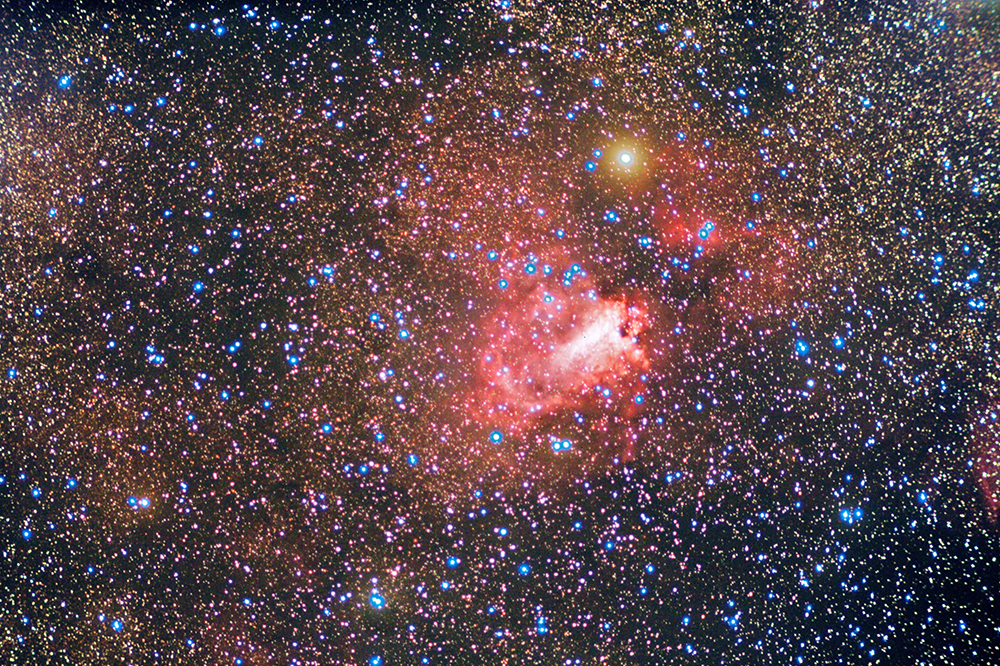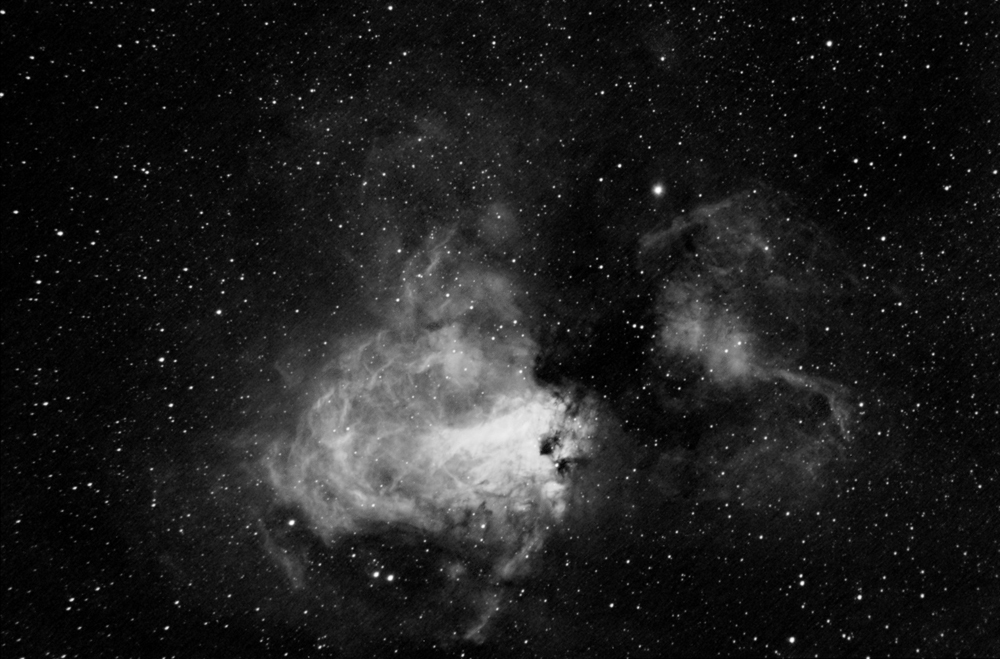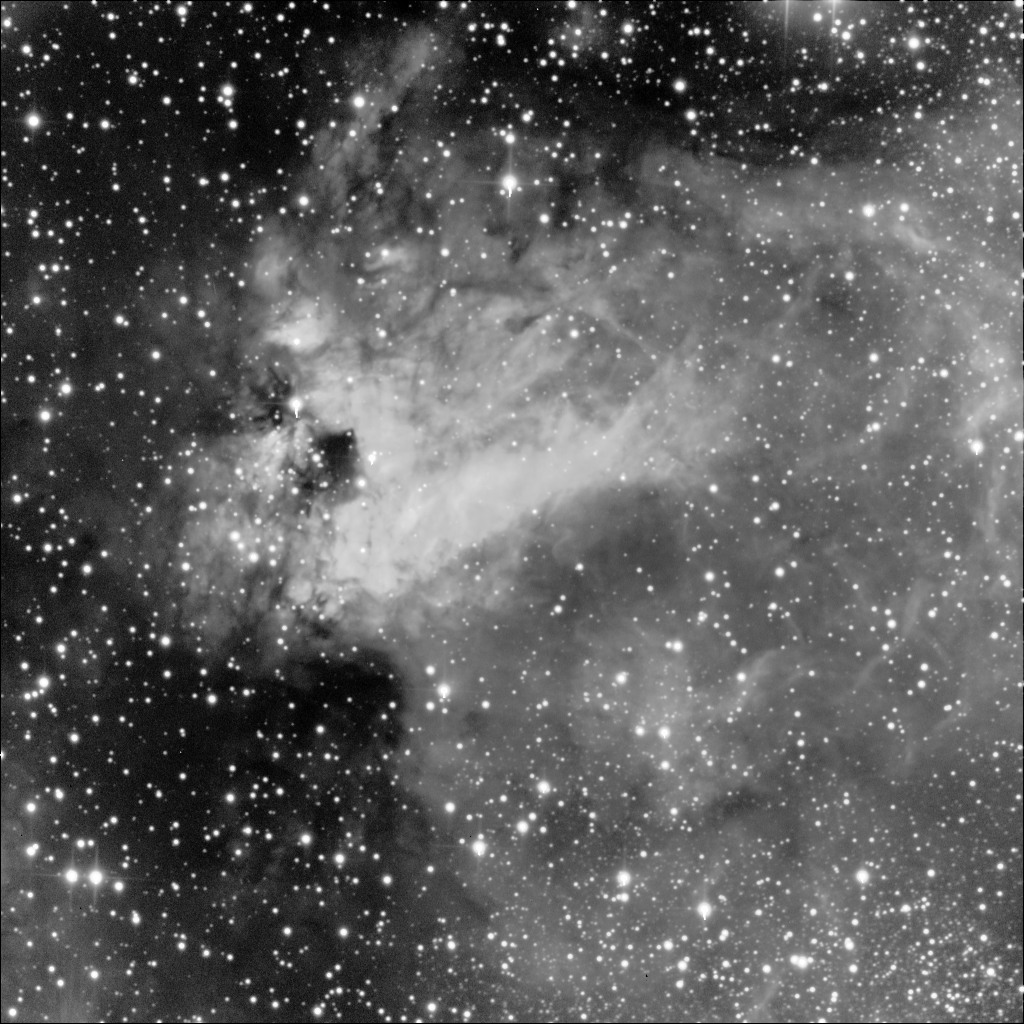
45 minutes exposure, Fuji Super G 400 wide format film
300mm f/2.8 Canon lens.
The Omega Nebula
| Object Type | Emission Nebula |
| Constellation | Sagittarius |
| Magnitude | 6.0 |
| Size | 20.0' x 20.0' |
M17 is a moderately large and bright emission nebula in Serpens. The nicknames, "Omega Nebula" and "Swan Nebula" come from the hook-shape in the south-western portion of the nebula, prominently visible in an 8" telescope. Only a little imagination is required to picture an swan swimming gracefully across the sky.

45 minutes exposure, Fuji Super G 400 wide format film
300mm f/2.8 Canon lens.
This is a wide field photograph of the Milky Way to the east of M17. It shows the incredible richness of the Milky Way in this area. To the lower left of M17 is a scattered cluster of bright stars. This is M25. The small bright cluster just below the dark nebulosity is NGC 6645.

Towards the bottom of the photograph is a small group of bright blue stars. This is the open cluster M18 (NGC 6613). To the right (south-west) of M17 is the large but faint emission nebula, IC 4701. Imbedded on the eastern edge of this nebula is the open cluster NGC 6596.
To the upper right (west) of M17 is a bright patch of nebulosity. The brighter patch surrounding the double star is IC 4707, while the patch to the west is IC 4706.





Combination of 17, 1 minute images with a clear filter and 5, 1 minute images with red, green, and blue filters.
SBIG ST-8E CCD, 8" f/6.3 schmidt-cassegrain at prime focus.

Combination of 19, 2 minute images with a clear filter and 5, 2 minute images with red, green, and blue filters.
SBIG ST-8E CCD, 8" f/6.3 schmidt-cassegrain at prime focus.


The patch of nebulosity to the right (west) of M17 is interesting. The brightest portions of this nebula correspond to the locations of two IC objects that some catalogs list as "missing". These are IC 4706 and IC 4707.



The above image was processed using the H-alpha images as the red channel. This is the preferred palette of the European Southern Observatory. The HST observers prefer to use the SII images as the red channel since the SII line is at a slightly longer wavelength than the H-alpha line. This results in a more green-dominated image as shown below.
